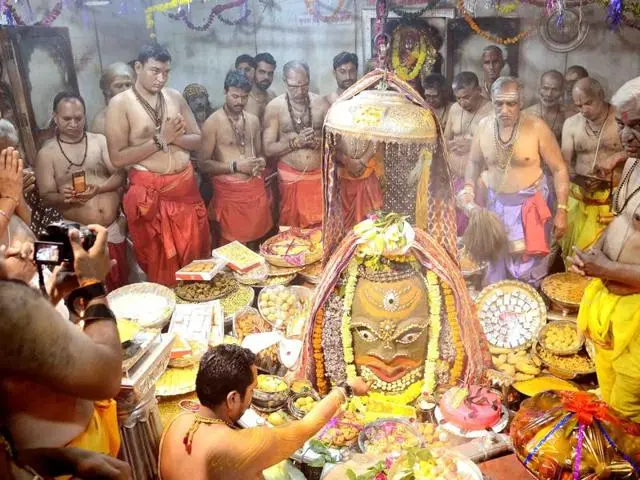
Ujjain, a city steeped in ancient history, is more than just a geographical destination; it's a sanctuary of spirituality. At its core lies the revered Mahakaleshwar Temple, home to one of the twelve sacred Jyotirlingas of Lord Shiva. This majestic temple radiates a timeless energy, drawing pilgrims and devotees from every corner of India

Revealing the Jyotirlinga: A Beacon of Divine Energy
The term "Jyotirlinga" translates to "radiant linga," symbolizing a column of divine light that embodies the infinite power of Lord Shiva. According to mythology, a cosmic pillar of fire extended infinitely from Shiva, challenging both Vishnu and Brahma to find its limits. Vishnu descended to the netherworld and admitted his inability to find the source, while Brahma falsely claimed to have reached the top. Angered by Brahma’s deceit, Shiva manifested as the twelve Jyotirlingas scattered across India, marking his supremacy.
Mahakaleshwar Jyotirlinga holds a special place among them. Unlike most Jyotirlingas, which are often depicted as tall black stone columns, Mahakaleshwar’s lingam is considered "swayambhu," or self-manifested. It is unique in its south-facing orientation and features five faces carved from natural black volcanic stone, a rare and powerful form of Shiva’s manifestation.
A Journey Through Time: The History of Mahakaleshwar Temple
The history of the Mahakaleshwar Temple is as rich as the beliefs it upholds. References to the temple are found in ancient texts like the Skanda Purana and Shiva Purana, though the exact date of its origin remains a mystery, suggesting its presence for millennia. Over the centuries, the temple endured multiple invasions, including its destruction under Iltutmish's rule in the 13th century. During this time, it is believed that the original Jyotirlinga was dismantled and discarded into the sacred Kotiteerth Kunda within the temple grounds. Despite these challenges, the temple was reconstructed in the 18th century by Maratha General Ranoji Shinde, although the original Jyotirlinga was never recovered.
The current structure, a symbol of resilience, reflects the architectural style of the Maratha era, with intricately carved pillars and a towering shikhara (spire) adorned with mythological figures. The temple stands as a testament to the enduring devotion of the Hindu faith.
Despite its turbulent past, the temple has risen like a phoenix, a testament to the enduring faith of Hindus. The present structure reflects the architectural influences of the Maratha era, characterized by intricately carved pillars and a towering shikhara (spire) adorned with mythological figures.
A Day at Mahakaleshwar: Immersing in the Sacred
Visiting Mahakaleshwar Temple is a profound spiritual experience. The temple opens at 4:00 AM with the iconic "Bhasma Aarti," a unique ritual where sacred ash, symbolizing the impermanence of life, is offered to the Jyotirlinga. This ash is believed to be collected from cremation pyres along the Shipra River. Witnessing this ritual serves as a powerful reminder of life's transient nature and the eternal cycle of birth and death.
Throughout the day, various prayers and rituals take place, each carrying its own significance. Devotees flock to the temple, offering prayers and seeking blessings amid a vibrant spiritual ambiance. The temple complex also features smaller shrines dedicated to deities like Parvati, Nandi (Shiva’s bull), and Ganesha.
Exploring Ujjain Beyond the Temple
Ujjain is a city steeped in history and mythology, known as one of the seven sacred cities in Hinduism. It is also the site of the Kumbh Mela, a grand pilgrimage that occurs every 12 years. Visitors can explore other notable landmarks such as the Kal Bhairav Temple, Gadh Kalika Temple, and the Mahakali Caves, a UNESCO World Heritage Site.
No visit to Ujjain is complete without experiencing its lively street food culture. From the sweet delight of jalebis to savory samosas, the local cuisine is a treat for the taste buds.
A Pillar of Faith: The Lasting Legacy of Mahakaleshwar
Mahakaleshwar Temple is more than just a place of worship; it stands as a symbol of strength, unwavering faith, and the eternal presence of Lord Shiva. Through the centuries, it has continued to attract devotees seeking spiritual refuge and a connection with the divine power of Mahadev.
